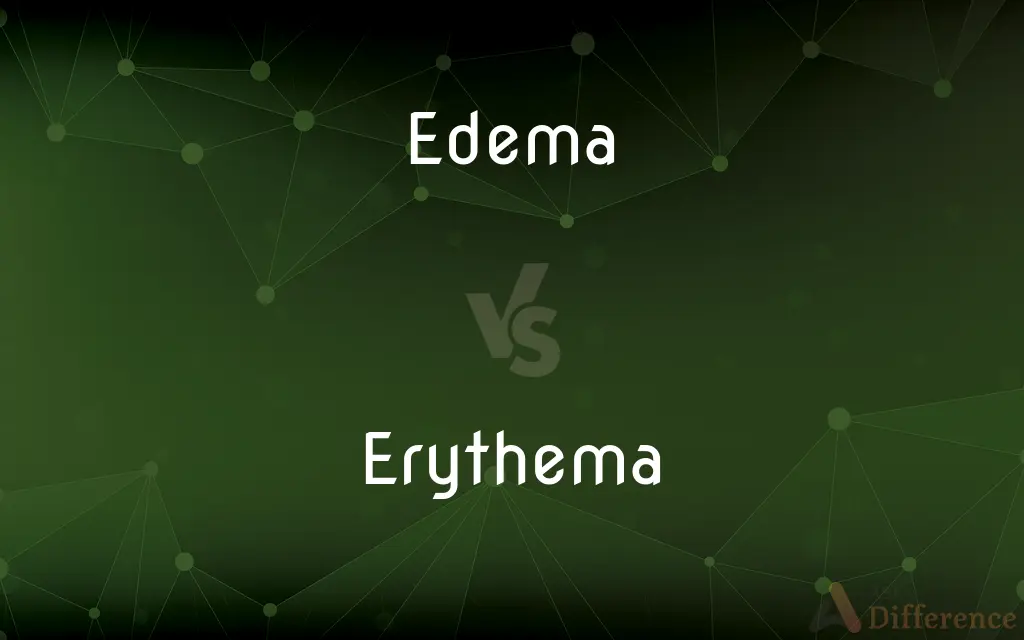Edema vs. Erythema — What's the Difference?

Difference Between Edema and Erythema
ADVERTISEMENT
Compare with Definitions
Edema
Edema, also spelled oedema, and also known as fluid retention, dropsy, hydropsy and swelling, is the build-up of fluid in the body's tissue. Most commonly, the legs or arms are affected.
Erythema
Erythema (from the Greek erythros, meaning red) is redness of the skin or mucous membranes, caused by hyperemia (increased blood flow) in superficial capillaries. It occurs with any skin injury, infection, or inflammation.
Edema
(Medicine)An excessive accumulation of serous fluid in tissue spaces or a body cavity.
Erythema
Redness of the skin caused by dilatation and congestion of the capillaries, often a sign of inflammation or infection.
Edema
(Botany)A condition of plants characterized by blisterlike swellings on the leaves or other parts, caused by an accumulation of water.
ADVERTISEMENT
Erythema
Abnormal redness and inflammation of the skin, due to vasodilation.
Edema
An excessive accumulation of serum in tissue spaces or a body cavity.
Erythema
Skin redness from sunburn or chemical irritation
Edema
A similar swelling in plants caused by excessive accumulation of water.
Erythema
A disease of the skin, in which a diffused inflammation forms rose-colored patches of variable size.
Edema
Same as œdema.
Erythema
Abnormal redness of the skin resulting from dilation of blood vessels (as in sunburn or inflammation)
Edema
Swelling from excessive accumulation of serous fluid in tissue
Share Your Discovery

Previous Comparison
Microinch vs. Micron
Next Comparison
Element vs. Unit













































